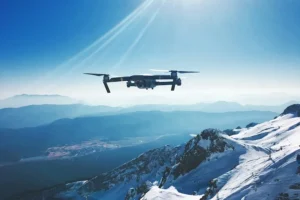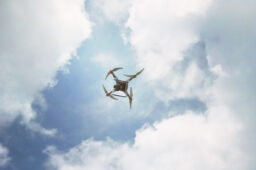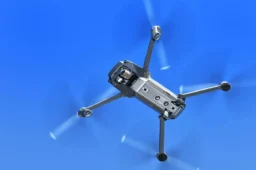
Drone Captures Moose Shedding Antlers
Drone Captures Moose Shedding Antlers, The grandeur of nature unfolds in unexpected ways, often leaving us speechless and humbled. One such spectacle, rarely witnessed firsthand, is the shedding of antlers by a majestic moose. These bony crowns, symbols of dominance and virility, are relinquished each year in a natural cycle as dramatic as it is intriguing. And thanks to the advancements in drone technology, we now have a front-row seat to this awe-inspiring event. Here perfect and desire description about “Drone Captures Moose Shedding Antlers“:
The Majesty of Moose Antlers
Moose antlers are truly remarkable structures. The largest of any land mammal, they can reach a staggering seven feet in width and weigh upwards of 60 pounds. Composed of bone and cartilage, they grow throughout the summer, fueled by high levels of testosterone. These magnificent headpieces serve not just for attracting mates and establishing dominance, but also for foraging, sweeping away snow, and even fending off predators.
The Cycle of Shedding
As winter approaches and testosterone levels dwindle, the base of each antler, known as the pedicle, weakens. Around December or January, with a forceful shake of the head or a scrape against a tree, the antlers detach, leaving behind a bloody but quickly healing patch. This annual shedding is not just a physical release; it represents a physiological shift as the moose transitions from breeding season to a period of energy conservation and winter survival.
The Drone’s Eye View
Traditionally, witnessing a moose shed its antlers has been a matter of sheer luck. Their solitary nature and preference for dense forests make them elusive creatures, and the shedding itself is often a quick and silent affair. Enter the drone, a technological marvel that grants us access to previously unseen corners of the natural world. With their silent flight and maneuverability, drones can hover discreetly above the forest canopy, offering a bird’s-eye view of wildlife behavior.
A Rare Glimpse
Imagine the thrill of watching a video captured by a drone: a magnificent bull moose stands in a snow-covered clearing, its breath misting in the cold air. Suddenly, it throws its head back with a violent jerk, and with a soft thud, both antlers fall to the ground like fallen branches. The moose snorts, seemingly unfazed by the loss, and continues grazing on the winter foliage. This is the power of drone technology, bringing us face-to-face with the wonders of nature that would otherwise remain hidden.
Beyond the Spectacle: Conservation and Respect
While drone footage of antler shedding is undoubtedly captivating, it’s crucial to remember that these majestic creatures deserve our respect and protection. Responsible drone use is key: maintaining safe distances, avoiding harassment, and prioritizing the well-being of the animals above capturing the perfect shot.

Witnessing a moose shed its antlers is a privilege, a reminder of the delicate balance of life in the wild. By using technology responsibly and approaching nature with awe and respect, we can ensure that future generations continue to be amazed by these gentle giants of the forest.
What are moose antlers made of
what exactly are these impressive appendages made of? Moose antlers, unlike the permanent horns of cattle or sheep, are a fascinating marvel of biology. They’re not simply extensions of bone, but intricate living structures teeming with nerves, blood vessels, and even cartilage.
Imagine them as temporary crowns, meticulously sculpted from living bone each year. During the summer months, a network of blood vessels beneath a velvety skin called the “periosteum” fuels rapid growth. This “velvet” phase is crucial, providing nutrients and oxygen to the rapidly-forming bone within. Minerals, primarily calcium and phosphorus, deposit themselves, resulting in the intricate branching patterns we admire. Come autumn, testosterone levels drop, signaling the end of the growing season. The periosteum dries and shrinks, exposing the hardened bone beneath. The moose, sensing this change, rubs and scrapes against trees, hastening the inevitable – the dramatic shedding of the now-unneeded antlers.
Witness this annual ritual
So, the next time you witness this annual ritual, remember – it’s not just antlers falling away. It’s the culmination of a complex biological process, a testament to the incredible adaptability and resilience of these magnificent creatures. And with each shed antler, the stage is set for a new crown to emerge the following year, ensuring the continuation of this awe-inspiring spectacle.
How often do moose shed their antlers
The dramatic drone footage you just witnessed wasn’t a one-time event. Antler shedding, also known as casting, is an annual ritual for male moose (females lack antlers altogether). It’s a fascinating biological process that’s intricately linked to their mating season and survival strategies.
Shedding Season:
Think of moose antlers as elaborate crowns worn during a grand ball. Once the festivities (breeding season) are over, the crowns come off. This typically happens in late winter or early spring, around December to February. By this time, testosterone levels have plummeted, and the antlers, fueled by this hormone, start to weaken.
A Precise Break:
The separation doesn’t happen haphazardly. A special layer of cells forms between the base of the antler and the skull bone, creating a clean break. The moose might rub against trees or rocks to hasten the process, but ultimately, the antlers detach with a satisfyingly audible crack.
A Fresh Start:
With their heavy headgear gone, moose become leaner and more agile. This is crucial for navigating the snow-covered landscapes and foraging for food in the harsher winter months. It also saves them energy, which they can then channel into growing a brand new set of antlers come spring.
Nature’s Recycling Program:
The shed antlers don’t go to waste. They become a valuable source of calcium and other minerals for smaller animals like rodents and even other moose. The discarded antlers decompose, enriching the soil and contributing to the delicate balance of the ecosystem.
So, the next time you see a majestic moose sporting a magnificent rack, remember that it’s just a temporary accessory. Soon enough, nature’s grand recycling program will kick in, and those impressive antlers will become part of the forest floor, making way for a fresh start come spring.
Lens of the drone
Witnessing a moose shed its antlers is a rare and awe-inspiring spectacle. Through the lens of the drone, we’ve been offered a front-row seat to this remarkable display of nature’s intricate design. But beyond the visual feast, this experience invites us to contemplate deeper themes:
- Adaptation and resilience: Moose antlers, once tools for dominance and survival, become expendable once their purpose is served. This cycle of growth and release reminds us of nature’s constant flux and the importance of adapting to changing seasons and circumstances.
- Interconnectedness: The drone footage captured more than just a shedding moose; it revealed the intricate web of life in the taiga. From the watchful ravens and curious foxes to the silent dance of snowflakes, we glimpsed the delicate balance that sustains this ecosystem.
- Respect for the wild: Witnessing an animal in its natural habitat, unperturbed by human presence, instills a sense of humility and respect. By observing from afar, we learn to appreciate the intricate dance of life that unfolds around us, without disrupting its rhythm.
Final Quote:
Drone Captures Moose Shedding Antlers, The next time you hear the crackle of antlers against birch bark, remember the journey captured in this drone footage. See it not just as a fleeting moment of wildlife drama, but as a testament to nature’s power, resilience, and interconnectedness. Let this glimpse into the wild inspire us to tread lightly, observe with reverence, and protect the delicate balance that sustains all life on Earth.





